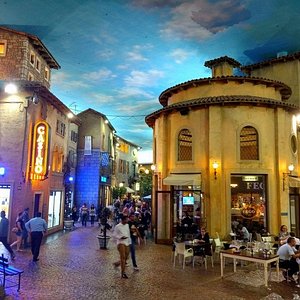Johannesburg North Attractions Can Be Fun For Anyone
Johannesburg North Attractions Can Be Fun For Anyone
Blog Article
Johannesburg North Attractions Fundamentals Explained
Table of ContentsThe Ultimate Guide To Johannesburg North AttractionsThe Main Principles Of Johannesburg North Attractions Johannesburg North Attractions Things To Know Before You BuyThe Facts About Johannesburg North Attractions UncoveredThe Johannesburg North Attractions PDFsJohannesburg North Attractions Things To Know Before You Get This
The city grew on the edge of the Witwatersrand Key Reef, a below ground stratum of gold-bearing quartz-silica conglomerate that arcs for hundreds of miles beneath the Highveld - Johannesburg North attractions. Most of the gold mines in the city stopped procedure in the 1970s, yet in its day the Witwatersrand gold industry accounted for even more than 40 percent of the world's yearly gold manufacturing.Johannesburg has a temperate environment. Summer season temperature levels average about 75 F (24 C); wintertime temperatures balance about 55 F (13 C) and just occasionally dip below cold. The city takes pleasure in about eight hours of sunlight per day in both winter and summertime. Rainfall standards regarding 28 inches (700 millimetres) per annum, yet the total differs considerably from year to year.
What rainfall the city gets falls practically exclusively in the summer months, frequently in magnificent late-afternoon electrical tornados., where lots of locals still count on coal for fuel.

The Ultimate Guide To Johannesburg North Attractions
The equilibrium of the city is occupied by whites. Lodging varies in character and top quality.
Physical development, although somewhat restricted by transportation, proceeded quickly as migration to South Africa, and Johannesburg specifically, enhanced substantially. This issue was fixed in the 1930s when the vehicle was introduced in mass production to South Africa. Vehicles were, essentially, restricted to the wealthy, and permitted them to transfer to the north of the city and commute right into the centre.
Most bad residential areas were mixed, with poor blacks and whites living together, although the well-off suburbs were generally reserved for whites.
The previous system of eleven numbered areas was reorganised in 2006. Marshalltown, as seen from the top of the Carlton Centre. The M1 and M2 run behind the buildings, and the southern residential areas extend past the highway limit. The central city of Johannesburg lies within the city's Area F. The number of people living in the internal city on an informal basis is unknown, as several are unlawful immigrants. The unemployment, education and learning, and age profiles of the area are all unknown, due to the trouble of obtaining dependable info about the area.
An Unbiased View of Johannesburg North Attractions
Yeoville and Bellevue have a mix of apartment or condo buildings and solitary household devices on small great deals. The area is situated on a mountainous divide that ranges from east to west. One of the most obvious geographical feature is Observatory Ridge, which is named for the big observatory located on it. The recreational areas are no more used, as a result of safety troubles.

Johannesburg Arena, a training ground for both the Golden Lions and Orlando Pirates, is adjacent. The eastern residential areas of Johannesburg my site are situated company website in the city's 7th [] and 9th [] areas. The area is likewise functionally incorporated with East Rand boundary towns outside of the main border of Johannesburg, such as Bedfordview and Edenvale (both component of Ekurhuleni Metropolitan Municipality).
The 30-Second Trick For Johannesburg North Attractions
R. Tambo International Airport Terminal). The eastern suburban areas are several of the earliest areas of Johannesburg, there are big areas of Jewish and other European histories, the majority of the population is English speaking. There are three fairway in addition to a number of safeguarded ridges with viewsites. There are several well-developed and up-market amusement and shopping areas in the east such as the Eastgate Buying Centre and the Greenstone purchasing centre.
Initially built to house male migrant workers, many have been boosted as residences for couples and families. The residential area was not traditionally permitted to produce employment centres within the location, so nearly all of its homeowners are travelers to other components of the city.
The Greatest Guide To Johannesburg North Attractions
The property locations in the northern suburban areas are generally official, with no substantial locations of informal housing, or housing that does not have a permanent structure. This is an established area, there is a pattern of land use modification from property to industrial, specifically along major arterial roads and around well established nodes.
The location is well connected to road networks, particularly along the north-south additional reading axis developed by the M1 and N1. Roads to the eastern and west are much less well created, as there are no highways taking a trip because direction. In the direction of the northern border of the city, the density of advancement decreases, leaving large locations of undeveloped land around Midrand.
The 8-Minute Rule for Johannesburg North Attractions
, which is located on a hillside ignoring the inner city and Hillbrow.
Report this page